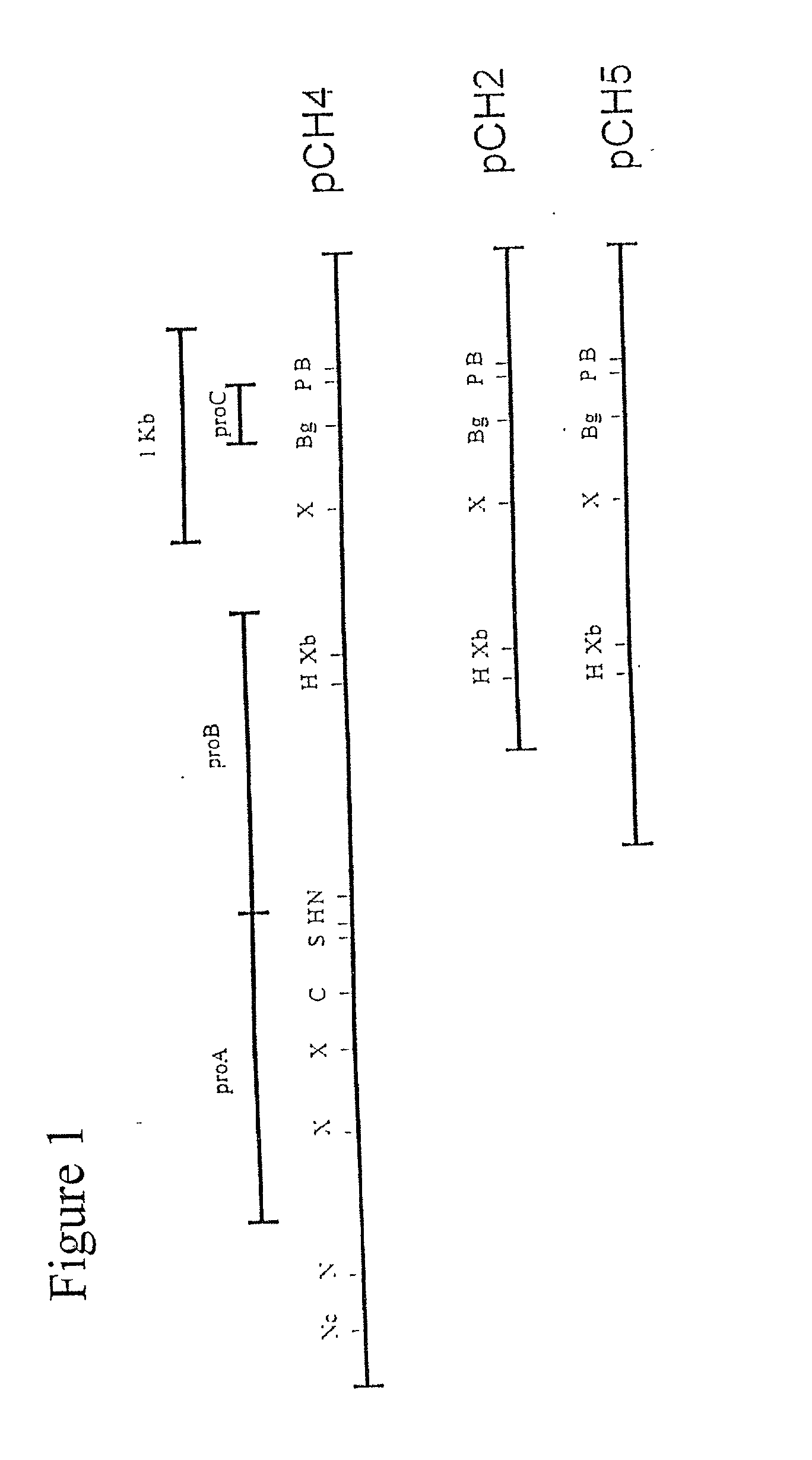Ehrlichia canis genes and vaccines
a technology of ehrlichia canis and genes, applied in the field of veterinary pathogens, can solve the problems of no vaccine currently available, affecting the entire lymphatic system, devastation of multiple organs,
- Summary
- Abstract
- Description
- Claims
- Application Information
AI Technical Summary
Benefits of technology
Problems solved by technology
Method used
Image
Examples
Embodiment Construction
[0014] E. canis causes a devastating canine disease. Currently, there is no vaccine available to prevent this disease. This invention provides the tools necessary to develop such a vaccine. More specifically, four genes have been identified from a genomic fragment of E. canis, named ProA, ProB, mmpA, and a cytochrome oxidase homolog. In addition, a partial gene coding for a lipoprotein signal peptidase homolog has been found. Any of these proteins can be utilized in an embodiment of this invention to develop a vaccine.
Screening an E. canis Library
[0015] To identify genes in the E. canis genome, a genomic DNA expression library was constructed. An E. canis strain isolated from dogs with canine ehrlichiosis was grown in the dog cell line DH82 by a technique being known in the art, and incorporated by reference (Dawson et al., 1991; Rikihisa, 1992). The cells were harvested and the chromosomal DNA extracted as described by a technique known in the art (Chang et al., 1987; Chang et al.,...
PUM
| Property | Measurement | Unit |
|---|---|---|
| Angle | aaaaa | aaaaa |
| Angle | aaaaa | aaaaa |
| Angle | aaaaa | aaaaa |
Abstract
Description
Claims
Application Information
 Login to View More
Login to View More - R&D
- Intellectual Property
- Life Sciences
- Materials
- Tech Scout
- Unparalleled Data Quality
- Higher Quality Content
- 60% Fewer Hallucinations
Browse by: Latest US Patents, China's latest patents, Technical Efficacy Thesaurus, Application Domain, Technology Topic, Popular Technical Reports.
© 2025 PatSnap. All rights reserved.Legal|Privacy policy|Modern Slavery Act Transparency Statement|Sitemap|About US| Contact US: help@patsnap.com

